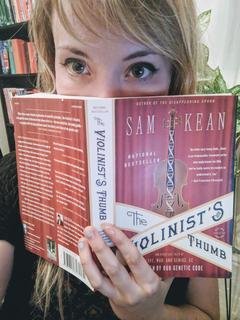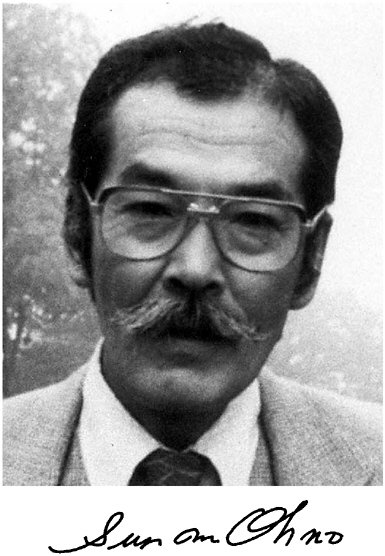Coding Music to Resemble DNA: Life Governing Patterns pt. 1
"Something even more interesting happened when two scientists, instead of turning DNA into music, inverted the process and translated the notes of a Chopin nocturne into DNA. They discovered a sequence "strikingly similar" to part of the gene for RNA polymerase. This polymerase, a protein universal throughout life, is what builds RNA from DNA. Which means, if you look closer, that the nocturne actually encodes an entire life cycle. Consider: Polymerase uses DNA to build RNA. RNA in turn builds complicated proteins. These proteins in turn build cells, which in turn build people, like Chopin. He in turn composed harmonious music--which completed the cycle by encoding the DNA to build polymerase." -p. 80, "The Violinist's Thumb"

Me and this book.
When I first read the above excerpt from that book I almost jumped out of my seat to read it to the nearest strangers in Barnes & Noble before realizing that I might have spilled my 3 cups of coffee piled around me. What a remarkable find. One of my music theory professors once told me that man did not create music, we merely discovered it and all of it's complexities lying in wait. Translating music into a biochemical medium seems to solidify that. For however sensational this discovery made me feel, my curiosity quickly spiked. How was the nocturne translated exactly? What musical elements were considered? How is it similar to RNA polymerase? What is RNA polymerase? Mr. Keane did not explain any further in his book or provide any citations to these scientists work so I decided to do some digging.
Let's listen to the nocturne first:
It's a gorgeous piece of music. To me, all of Chopin's nocturnes are. Susumu Ohno, a geneticist and molecular biologist, thought so too, or at least he thought this particular nocturne fitting to translate into DNA/RNA sequences.

First, Ohno really wanted us to grasp that our existence is a hierarchy of periodicities, which is the underpinning of his work involving musical compositions. Heck, the title of the article he published with these findings is entitled: "The all pervasive principle of repetitious recurrence governs not only coding sequence construction but also human endeavor in musical composition." Music itself is, simply put, audible time.
The nocturne is in F minor, meaning it contains the notes F, G, Ab, Bb, C, Db, and Eb, unless otherwise specified, and it is indeed 'otherwise specified' with the frequent occurrence of accidentals (the B, D, and E naturals just to name a few). How did he account for accidentals when assigning note values to chemical compounds? Now when I said I was going to do some digging I had no idea to what extent and am quickly realizing that I need a bigger shovel in order to answer my questions. It turns out Dr. Ohno's literature is pretty tricky to find. What I do find is literature riddled with jargon concerning genetics (which isn't a bad thing, I just lean more on the music side than the biochemical side) and nothing whatsoever on musical information from a theorist standpoint.
To be continued in part 2...
Sources
- http://www.science-connections.com/trends/human_leukemia/35.htm.htm
- https://www.ncbi.nlm.nih.gov/pmc/articles/PMC3268383/#B52
- https://www.karger.com/Article/PDF/14946
- http://articles.latimes.com/2000/jan/19/news/mn-55406
- https://futurism.com/is-music-in-our-dna/
- http://people.com/archive/by-fiddling-around-with-nature-susumu-ohno-finds-he-and-protozoa-make-beautiful-music-together-vol-29-no-15/
- https://www.ncbi.nlm.nih.gov/pubmed/3744439
Your post received an upvote by the @illuminati-Inc music curation team and its partner @curie.
You may consider voting for the Curie witness; all witness payouts are used to fund Curie operations including but not limited to more than 10 curation teams (vote here).
Thank you very much! Will definitely vote :)
Super! Thank You!
Thank you very much! Will definitely vote :)
I just wanted to let you know that you have been featured in my Magical Monday post today for #newbieresteemday. You will get 10% of the SP that the post makes. I am a big fan of yours already and I am wishing for so much success to come your way. You can check out the post you are featured in by clicking here. Keep up the great work!
Congratulations @kayannepepper! You have completed some achievement on Steemit and have been rewarded with new badge(s) :
Click on any badge to view your own Board of Honor on SteemitBoard.
For more information about SteemitBoard, click here
If you no longer want to receive notifications, reply to this comment with the word
STOPVery interesting. What about if one reverse the process for other biomolecules, will they then turn into beautiful pieces of music? There are multitude of biomolecular structures that are well defined in the scientific litterature, even downloadable from data bases. Could be the 'music of life' 😀
My thoughts exactly. The possibilities overwhelmed me a bit and I had to stop for the night. I'm seeing that many have already created "DNA music" or "Protein music", but Ohno here seems to be one of the few that did the inverse of that process for whatever conditions he originally applied.
hey @kayannepepper, I wanted to tell you that you have a chance to play in these games and earn some money... Here is the link so you can see what I am talking about:
https://steemit.com/play4anewbie/@davemccoy/play-4-a-newbie-challenge-day-1-scoreboard-and-games-to-play
Thanks for the link!
You're welcome.. and here's the new link... I will add to it every day ;)
https://steemit.com/play4anewbie/@davemccoy/play-4-a-newbie-challenge-day-2-scoreboard-and-games-to-play